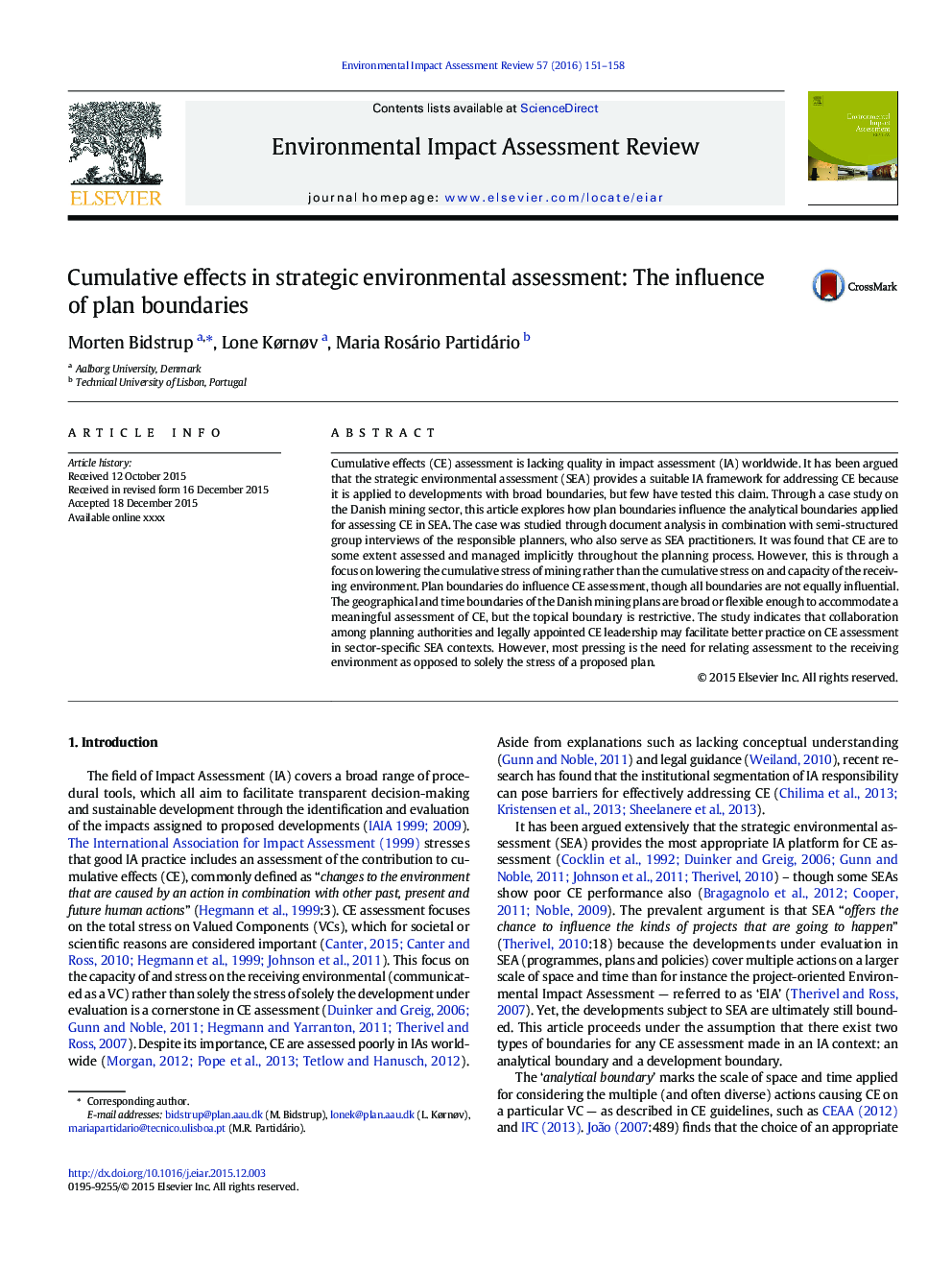| Article ID | Journal | Published Year | Pages | File Type |
|---|---|---|---|---|
| 7465184 | Environmental Impact Assessment Review | 2016 | 8 Pages |
Abstract
Cumulative effects (CE) assessment is lacking quality in impact assessment (IA) worldwide. It has been argued that the strategic environmental assessment (SEA) provides a suitable IA framework for addressing CE because it is applied to developments with broad boundaries, but few have tested this claim. Through a case study on the Danish mining sector, this article explores how plan boundaries influence the analytical boundaries applied for assessing CE in SEA. The case was studied through document analysis in combination with semi-structured group interviews of the responsible planners, who also serve as SEA practitioners. It was found that CE are to some extent assessed and managed implicitly throughout the planning process. However, this is through a focus on lowering the cumulative stress of mining rather than the cumulative stress on and capacity of the receiving environment. Plan boundaries do influence CE assessment, though all boundaries are not equally influential. The geographical and time boundaries of the Danish mining plans are broad or flexible enough to accommodate a meaningful assessment of CE, but the topical boundary is restrictive. The study indicates that collaboration among planning authorities and legally appointed CE leadership may facilitate better practice on CE assessment in sector-specific SEA contexts. However, most pressing is the need for relating assessment to the receiving environment as opposed to solely the stress of a proposed plan.
Related Topics
Physical Sciences and Engineering
Energy
Renewable Energy, Sustainability and the Environment
Authors
Morten Bidstrup, Lone Kørnøv, Maria Rosário Partidário,
